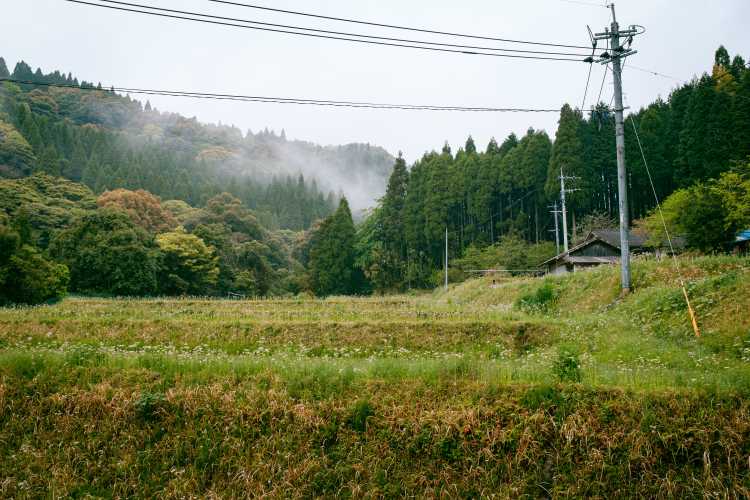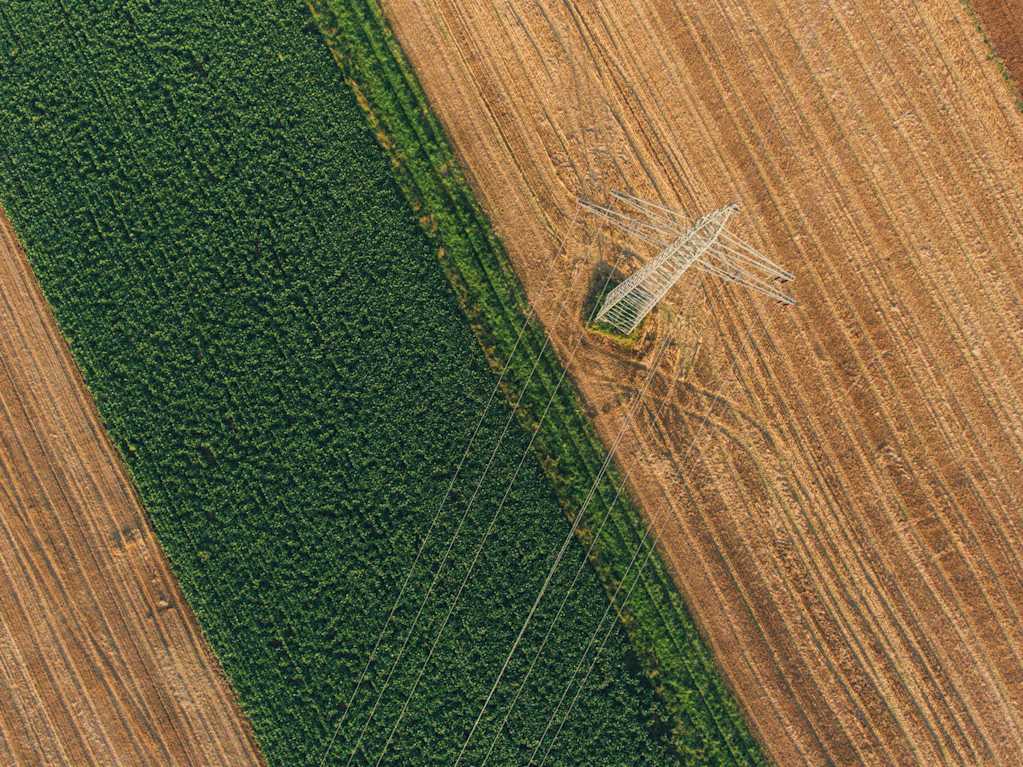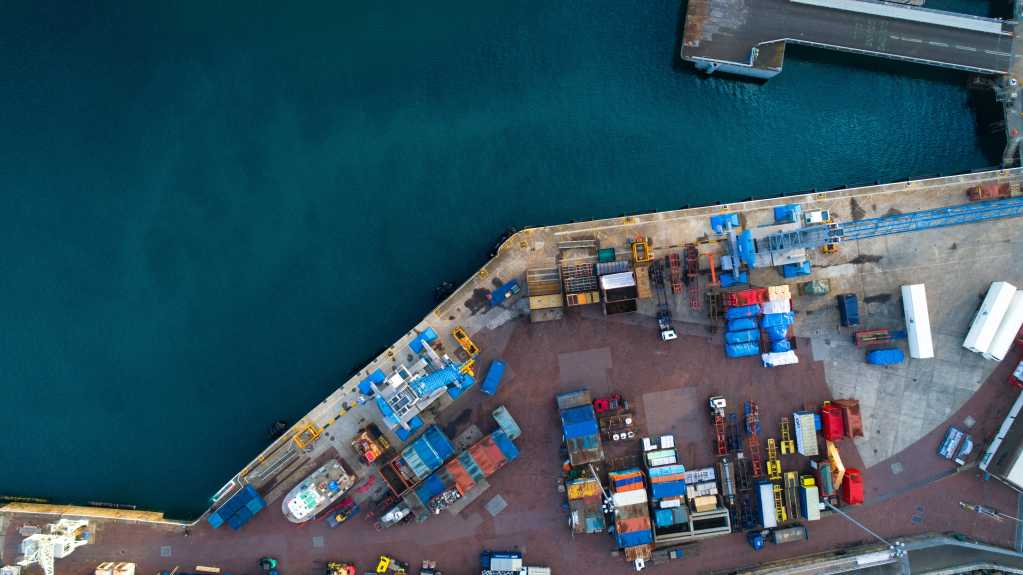The Changing Techniques for Infrastructure Management
The process of monitoring critical infrastructure, such as electrical transmission lines or railways, is changing. New technologies and innovative techniques can, on the one side, bring vast efficiency gains, while on the other side can add complexity to processes that have been in place for years or even decades.
Our latest webinar posed the question to industry experts: is remote sensing a replacement for ground-based monitoring of critical infrastructure? The webinar covered infrastructure planning and monitoring from electrical transmission lines and railways to telecommunications signal towers, showcasing technologies from viewshed analytics to machine learning-backed vegetation monitoring.
Detecting Trees With UP42 and Spacept
Up first was UP42’s own Thaïs Bendixen. Thaïs is a data scientist in UP42's processing team and has a background in geological and Earth sciences. She introduced the UP42 platform, walking users through the key features and benefits of using the UP42 platform for infrastructure monitoring.
However, Thaïs's presentation was much more than a product pitch! She proceeded to outline how with just a few lines of code, you can leverage Pléiades data and tree detection and height estimation algorithms from Spacept. This workflow is a low-cost, low-maintenance vegetation management solution that can be easily applied to critical infrastructure, where contact with or falling trees can cause outages, damage, or catastrophic events, such as forest fires.
In an @UP42_ webinar and Thais built a Jupyter notebook analysis in real time with an embedded Kepler map, and it was 🔥. Super impressive to see live. pic.twitter.com/5FiJK0vgQc
— Joe Morrison (@mouthofmorrison) May 12, 2021
The output of the analysis, built in a Jupyter notebook, was an interactive 3D visualization, with color-coding based on the risk that a specific tree presented to the stretch of railway that Thaïs was monitoring.
 Visualizing the output of Spacept's processing block on a Kepler map
Visualizing the output of Spacept's processing block on a Kepler map
This specific analysis was a static look that only provides insights on a specific point in time. But the binder provided by Thaïs could be easily customized to run the analysis on a regular basis, turning ad hoc analysis into a fully automated monitoring solution. The outputs of the workflow could even be integrated into your holistic vegetation management solution as an additional visualization or to augment existing analysis.
Managing Powerline Vegetation With AiDash
We were then joined by CTO Rahul Saxena and Chief AI Officer Nitin Das, who showcased how AiDash uses UP42 to transform vegetation management for electrical utilities. They began their presentation with the current state of vegetation management, throwing out the bold claim that "vegetation management today is archaic", resulting in huge costs for utility companies, often exceeding $100M.
Rahul outlined some key reasons why the process today was inefficient. For example, he outlined the process of "cycle trims", where utility companies estimate when a tree close to a powerline needs to be cut back solely based on the last time the tree was trimmed. This is a largely manual process that lacks underlying data. As a result of the lack of data, utility companies cannot get insights into when precisely the tree should be trimmed, opting to take a cautious approach and trimming the tree often more than required.
On the flip side of the high costs, the business impact of vegetation management is substantial. Among other metrics shared during the presentation, Rahul quoted NERC, who stated that "80-90% of utility funding and resources manage vegetation around distribution lines". It's clear to see, then, that bringing more efficiency and cutting costs in this area can have a vast business impact.
Rahul goes on to discuss why vegetation management through remote sensing has reached a stage of maturity. In the 50 years since satellite data hit the commercial market, the resolution and number of satellites have come on leaps and bounds. As a result of the higher resolution, AI models can now accurately extract insights. At the same time, the increase in the number of high-resolution satellites has increased the revisit rate to a point where commercial solution providers can get data of their area of interest frequently and at an affordable level.
 AiDash visualizing the change in satellite resolution over time
AiDash visualizing the change in satellite resolution over time
Rahul proceeded to outline how UP42 fits into the overall data and analytics infrastructure that they have set up to continuously and automatically provide insights to utility providers on vegetation encroachment, change, prioritization, digital elevation change, defects, classification, identification, and corrosion.
AiDash specifically chose UP42 because of the programmatic way to interact with the UP42 data infrastructure via API. This allows them to access both high-resolution satellite imagery from the Pléiades constellation - both archive and tasked imagery - and digital elevation models derived from very high-resolution aerial imagery from the HxGN Content Program.
 DSM data derived from HxGN Content Program aerial imagery
DSM data derived from HxGN Content Program aerial imagery
As a result of AiDash's analytics built on the data provided through UP42, utility providers can gain a 360-degree view of their entire network, correcting their GIS data, detecting current clearance around transmission lines, detecting hazard trees with declining health or potential for failure, and calculating the growth rate for vegetation along their lines. These insights, AiDash claims, can improve transmission grid reliability by 15% and reduce utility providers' vegetation budget by 20%.
Nitin did an incredible demo of the Intelligent Vegetation Management System (IVMS) provided by AiDash and presented how Avista, a large US-based energy company, uses the AiDash system.
Analyzing Line-of-Sight With Intermap
Next up was a presentation from Intermap's Nathan Mercer, software engineer and creator of the Intermap Viewshed processing block on the UP42 marketplace. Moving away from infrastructure monitoring and vegetation management for the moment, Nathan's presentation covers how to effectively plan the construction of specific types of infrastructure using Viewshed analytics for line-of-sight analysis.
Nathan began by introducing the concept of a__ Viewshed - a map that shows the "visible area that can be seen from a single location"__. Nathan started his presentation with this definition, elaborating that it includes all points in the line of sight and excludes all points obstructed by terrain, buildings, and other features.
 Basic viewshed visualization from Intermap
Basic viewshed visualization from Intermap
Nathan went on to explain the difference between a basic viewshed (above) and an RF viewshed, which takes into account models that determine, and integrate into the basic model, the radio frequency strength from a given point. An RF viewshed is specifically interesting for use cases in telecommunications, which Nathan proceeded to discuss.
In telecommunications, Nathan outlined, they are used to determine the optimal placement of telecom signal towers. When planning the construction of telecom signal towers, planners must ensure that there is line-of-sight and sufficient signal transmitted between the towers in the network to fulfill the intended coverage.
The line-of-sight analysis is critical here in ensuring that the network of towers combined has line-of-sight across the intended area while constructing towers efficiently such that you do not construct more towers than required. Such analysis can be augmented with RF Viewsheds that consider frequency, tower orientation, and even rain rate and oxygen loss - metrics that affect the signal strength between towers, even if there is a clear line of sight.
Nathan outlined additional use cases for viewshed analytics for renewable energy, construction, and drone UAV - all verticals where line-of-sight analysis can be hugely valuable and replace or augment traditional expensive and largely manual planning activities.
Measuring Ground Movement With CATALYST
Last but certainly not least was Shawn Melamed, Product Marketing Manager, and Sarah Thompson, Customer Success Technician at CATALYST - a brand of geospatial giant PCI Geomatics. Shawn opened the presentation with the problem statement, "Critical infrastructure is continuously at risk of damage, downtime or failure due to physical stresses caused by ground movement".
Elaborating on this key challenge, Shawn explained that existing monitoring processes result in significant data gaps due to the costs and technical limitations of current surveying techniques, such as Fixed GPS/GNSS Stations or Manual Surveying. Fixed GPS/GNSS Stations have a great temporal resolution, as they provide data per second or even per millisecond. But their high costs often mean that they are sparsely located, resulting in large spatial data gaps. Manual surveying steps in to fill these spatial data gaps, but as these manual surveys are expensive and time-consuming, large spatial data gaps persist while the manual surveys also have much lower revisit times.
These data gaps open up an opportunity for efficiency gains through remote sensing. Shawn goes on to explain that CATALYST uses remote sensing, specifically Synthetic Aperture Radar (SAR) data and InSAR analytics, to "measure ground displacement to millimeter level accuracy with a high density of reliable measurements updated regularly".
![]() CATALYST's ground displacement analytics
CATALYST's ground displacement analytics
Through UP42, Shawn explains, users can access CATALYST's differential InSAR processing block enabling them to cost-effectively and frequently gain insights into ground movement across large stretches of critical infrastructure, identifying risk areas that may require additional analysis or monitoring.
To dig into specific areas with higher-resolution and more precise insights, Shawn recommends that users leverage an analytics approach, soon to be launched on UP42, using commercial SAR data, such as TerraSAR-X, coupled with their Persistent Scatterer Interferometry (PSI) analytics.
To conclude, Shawn outlines three reasons why space-borne radar for displacement mapping is advantageous over traditional in situ methods:
- InSAR improves the quality of geotechnical engineering designs with historical data.
2.__ Risk is reduced__ by filling in the spatial and temporal data gaps left by manual surveying and Fixed GPS/GNSS Stations. 3. It reduces OpEx by reducing the investment in terrestrial surveying.
 A demonstration of how CATALYST analytics can be integrated with UP42
A demonstration of how CATALYST analytics can be integrated with UP42
Shawn goes on to outline how using their InSAR block through UP42, processing Sentinel-1, can enable users to integrate insights on ground displacement directly into a web application or 3rd party solution via API.
Shawn then hands over to Sarah, who proceeds to provide a demo of CATALYST's web application, showcasing the out-of-the-box insights that CATALYST offers through the UP42 platform. She proceeds to showcase how those insights can be extracted using the UP42 Python SDK. Demoing a Jupyter notebook, Sarah runs through how to install the UP42 library and run a workflow on a specific area of interest, where the output is the change in ground level for a specific area of interest.
Will Remote Sensing Replace Ground-Based Monitoring?
Each of the four presentations aimed to answer this fundamental question. And, as is perhaps expected, the answer is a little more nuanced than a simple yes or no.
Firstly, the quality of insights gleaned from satellite imagery or other remote sensing methods depends on the quality of the underlying data. As any data analyst, data scientist, or geospatial engineer will tell you, without good data, the resulting insights will never be valuable in the field. Luckily, the geospatial industry continues to be gifted with satellites that can provide higher temporal and spatial resolution levels while reducing the time from data capture to delivery. A fantastic example of this is the launch of Pléiades Neo from Airbus - arguably the world's most advanced satellite, providing satellite imagery at a 30cm resolution.
Secondly, with linear infrastructure, such as railways and pipelines stretching for, often, hundreds of kilometers, leveraging AI and machine learning to monitor attributes such as vegetation is hugely resource-intensive. Cloud computing power is catching up with the demands of the industry and making this type of analysis more feasible from both a cost and time perspective. But there's still some way to go in this regard.
Finally, we must be cognisant that remote sensing isn't necessarily limited to satellite- or aerial-based analysis. Drones and helicopters can capture imagery at extremely high resolutions augmented by LiDAR cameras to expand the breadth of insights available to those interpreting the data. This is outlined in our recent blog post, LiDAR, Drones, and Satellites: What Technology Works Best for Your Vegetation Management?
Ultimately, remote sensing brings an incredibly valuable, efficiency-driving, and cost-saving approach to traditional ground-based and in situ monitoring techniques. And the technology continues to evolve. Fast.
At its current maturity, remote sensing is an excellent addition to your existing infrastructure monitoring processes, augmenting insights and reducing the data gap. As the technology continues to evolve with contributions from incredible UP42 customers and partners, such as AiDash, Intermap, and CATALYST, the need for ground-based monitoring will likely continue to decrease.
Remote sensing will, perhaps, one day be the one and only solution needed to monitor and plan critical infrastructure and its surrounding environment.
Check out the full webinar recording below and let us know what you think or what webinar topics you'd like us to cover next on LinkedIn, Twitter, or Facebook!




